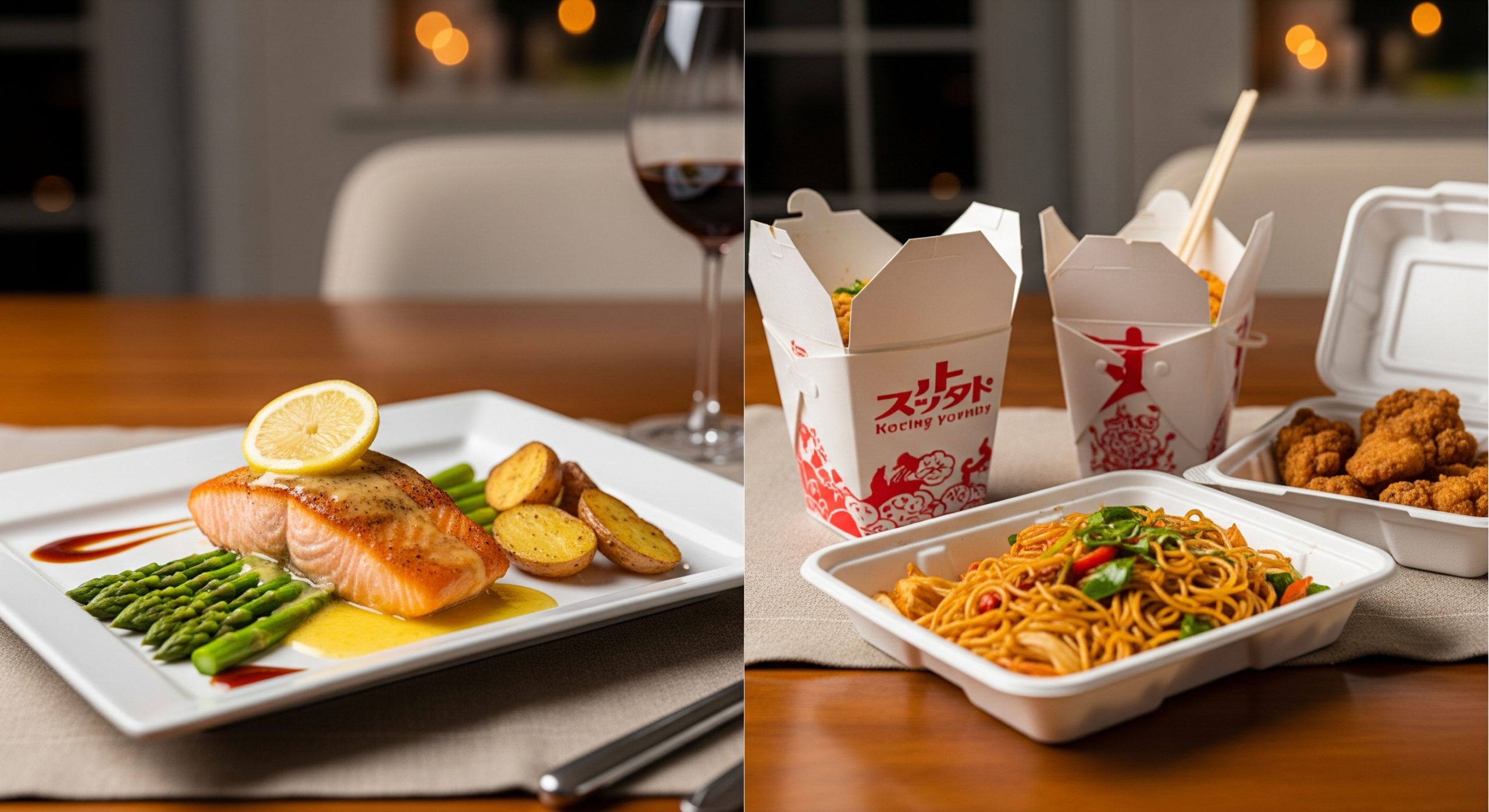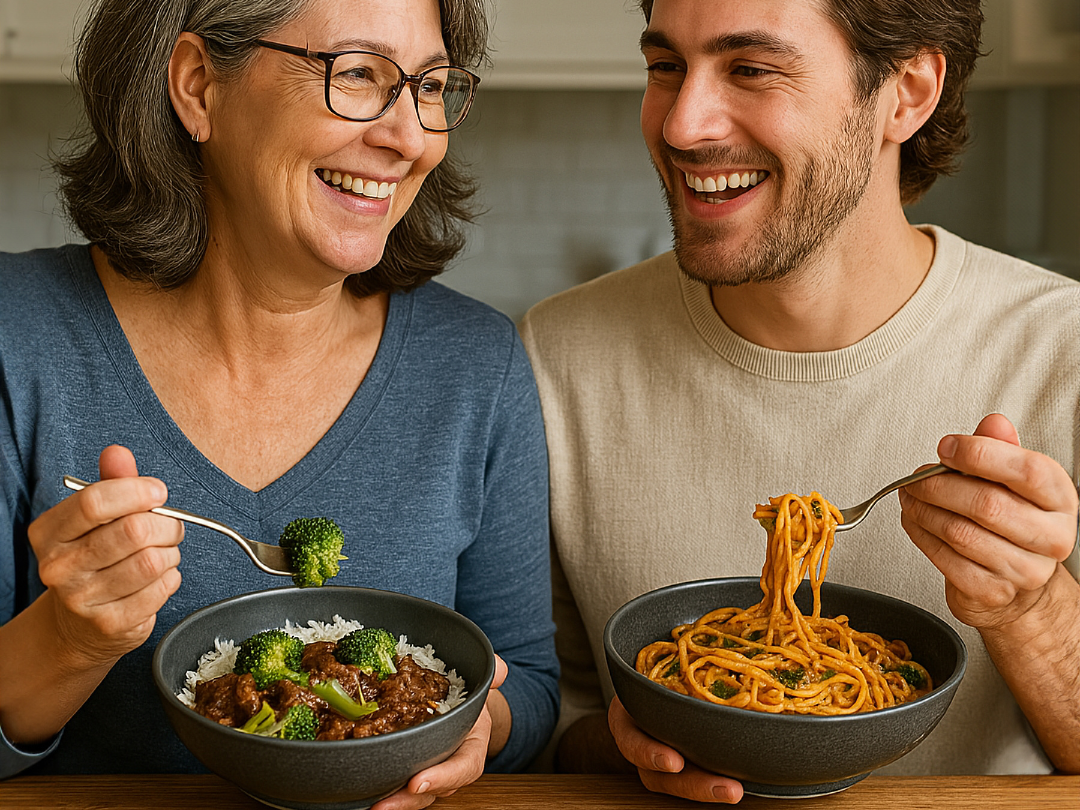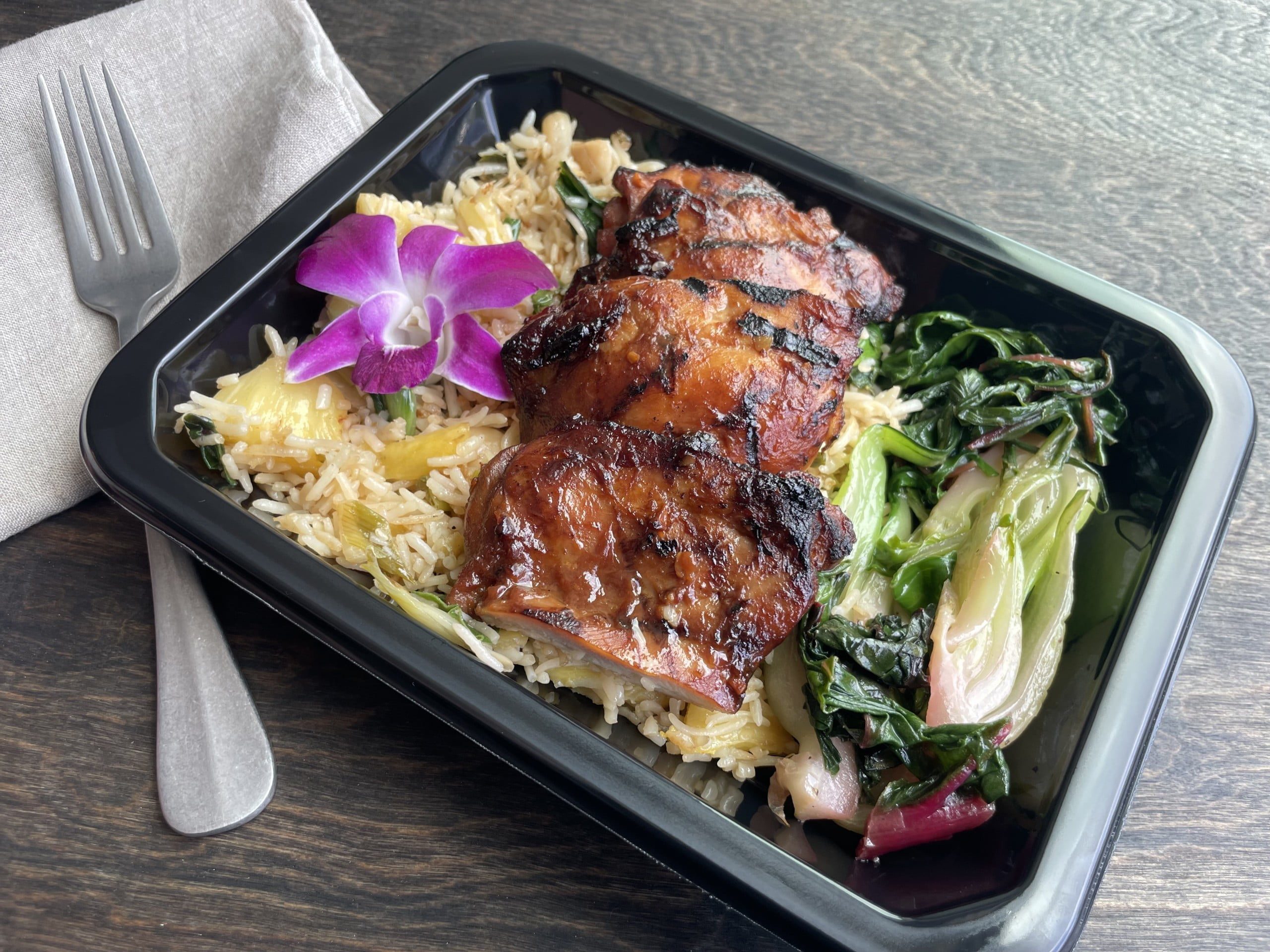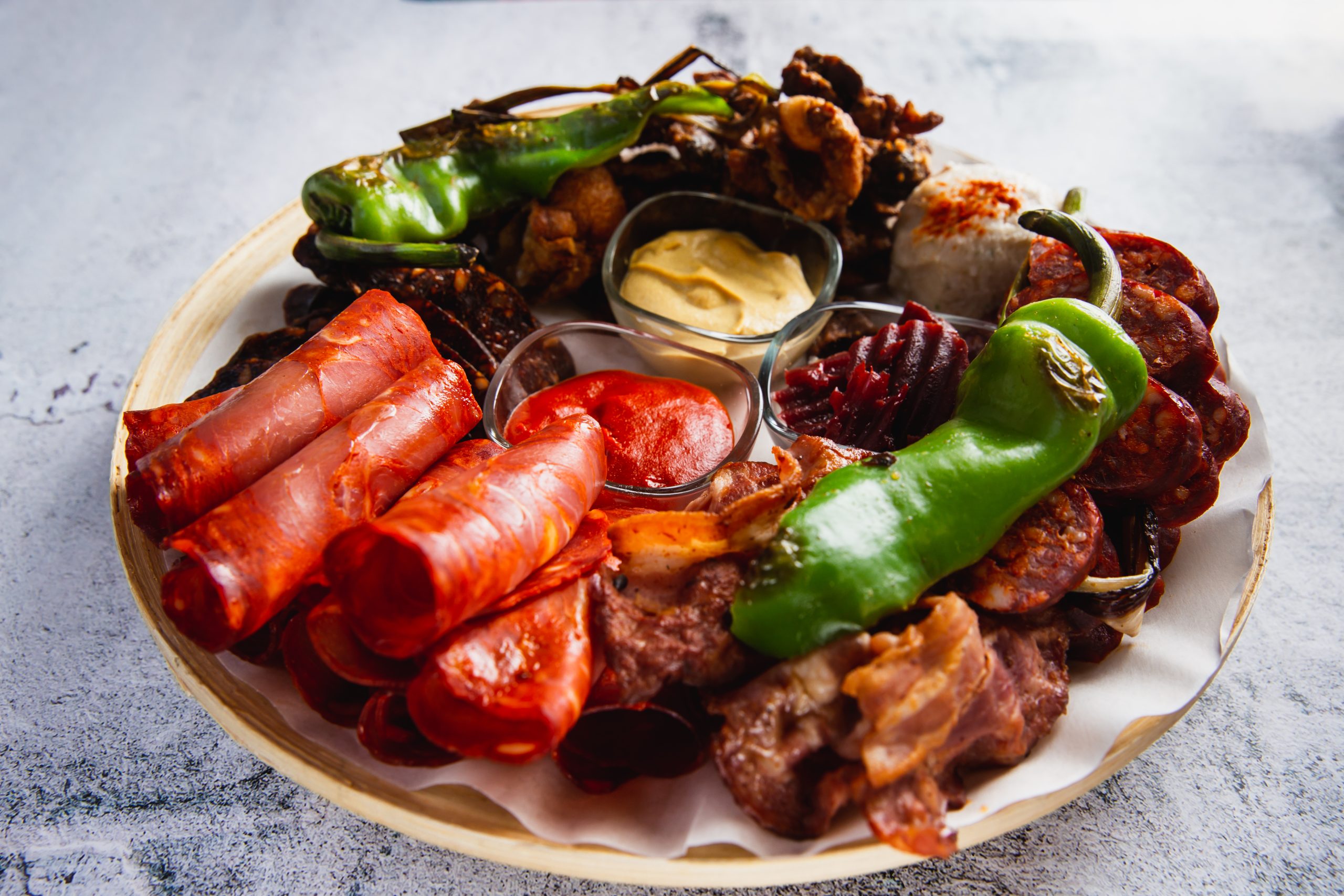
Restaurant-Quality Meals at Home: How Precooked Gourmet Options Compare to Takeout
Let’s be honest – we’ve all been there. It’s 6 PM on a Tuesday, you’re exhausted from work, and the last thing you want to
Cart
No products in the cart.
NEW YEAR SALE ENDS IN
Spend $130, Save $15. Spend $170, Save $20. Spend $200, Save $30.
When someone asks “what is Texas Cuisine” we are hard-pressed to come up with just one or two signature dishes or a singular style of cooking. We could list well-known signature dishes such as “Barbecue”, “Chicken Fried Steak” or “Tex-Mex” but this would only provide half an answer.
Texas is a fascinating fusion of nearly 30 ethnic or cultural groups, each contributing distinctive ingredients and recipes into the pot. The rich history of Texas has played a significant role in shaping the cuisine of the Lone Star State. And the landscape has played its part too from coast to plains to mountainous desert.
The six flags and five culinary regions of Texas make up a vast, patchwork of diversity in terms of culture, climates, terra, flora and fauna. It makes sense that the influences of indigenous people, settlers and immigrants greatly define Texas cuisine as we know it and make it one of the world’s most complex examples of ‘fusion cuisine’ on a massive scale.
According to The Texas Almanac, the Lone Star State can be divided into five mini-culinary states to understand its cuisine. They describe how six flags, meaning the sovereign nations that have governed Texas, have influenced Texan cuisine in each area in different ways:
Let’s look at the origins of Tex-Mex, Barbecue and Chicken Fried Steak and understand the cuisines that underpin these three signature dishes and others.
Tex-Mex cuisine has deep roots in both Spanish and Native American culture although the term “Tex-Mex Cuisine” was only officlally coined by Diana Kennedy in her 1970’s cookbook “Cuisines of Mexico,” where she made a clear distinction between “authentic” Mexican food served in Mexico and the mixed plates served north of the border.
The term “TexMex” (with no hyphen) originally began as an abbreviation for the Texas and Mexican Railroad, chartered in 1875. By the 1920s, some people were using “Tex-Mex” (with hyphen added) to describe people of Mexican descent living in Texas – more accurately called Tejanos – and eventually the label would be applied to the Mexican-style food typical of the region.
Tex-Mex Land is the vast region from Brownsville to San Antonio to El Paso, bordered on the west by the Rio Grande and Mexico. South Texas and San Antonio are the epicenter of Texas cuisine, meaning nachos, flautas, tamales, tacos, enchiladas, refried beans and Mexican red rice with tomatoes. Fajitas and chili con carne are the truest Tex-Mex dishes, more Texas than Mexican.
One unique characteristic of Tex-Mex food that distinguishes it clearly from Mexican is the heavy use of cumin, which is traceable to the 1500s, when the Spanish brought workers of Moroccan descent from the Canary Islands to their settlements in the San Antonio region. As a result, Moroccan cooking, with its heavy use of cumin and garlic, became part of the complex and interesting history of Tex-Mex cuisine.
Ninfa Laurenzo (1924–2001) commercialized and popularized fajitas at her Ninfa’s restaurant in Houston. We can trace this dish back to the vast ranches of South Texas. Here, Tejano ranch hands grilled what was once a throwaway cut of beef, the skirt steak, into delicious mesquite-flavored strips of beef. Originally beef, now fajitas can be grilled chicken, seafood, or vegetables wrapped in corn or flour tortillas (wheat flour introduced by American and European settlers).
The official state dish, chili con carne, is a meat stew flavored by dried, ground chile peppers. This totally Texas dish reflects Tejano (Mexican Texan) cooking — Native American, Spanish, and Mexican. The chili queens of the Spanish mission town of San Antonio made it famous. For more than 100 years, women would arrive at twilight in the military plazas of San Antonio, where they cooked chili over open fires and served it outdoors sometimes with Tamales at makeshift tables. Both Anglo-American Texans and Tejanos (Mexican Texans) enjoyed it.
San Antonio was also the birthplace of another Tex-Mex standard: the combo plate. In 1900, Chicago-born Otis Farnsworth of the Original Mexican Restaurant in the city started the trend of serving an entree alongside rice and beans, calling it “the Regular.” Many Mexican restaurants in Texas began copying the idea of the combination platter, often topped with sour cream and melted cheese, and it became a signature of Tex-Mex cuisine.
The Coast Bend region of Texas draws its culinary influence from the Cajun and Creole cuisines of Louisiana and New Orleans. These date back to the migration of Louisiana ranchers and ranch hands in the early 1800s who were drawn to the coastal prairies and salt grass flats of Texas. Next followed Louisiana oilfield workers, bringing culinary traditions such as wild game, waterfowl, and seafood with them. Various oil booms throughout the 1970s continued to draw workers in the petroleum industry. After that, settlements of Katrina refugees prompted a resurgence in Louisiana born cuisine.
The similarities between Creole and Cajun cuisines are due to the French heritage of both cultures, mixed with an overlap of local ingredients. Both types of cooking have culinary roots in France, with a sprinkling of Spanish, African and Native American, and a grain of West Indian, German, Irish, and Italian.
The cultural difference between the two methods of cooking lies in the fact that Creoles (French and Spanish settlers of New Orleans from wealthy families) had access to local markets, and servants to cook their food while Cajuns (migrants from French Canada) lived mostly off the land (coasts, bayous and prairies) and were subject to the elements of the seasons, and generally cooked meals in one large pot.
Cajun food is dominated by smoked meats as well as meat-heavy, one-pot dishes like jambalaya or the rice-filled, spicy pork sausage known as boudin. The backyard crawfish boil is also another byproduct of Cajun culture. Though delicious Cajun food can be found in New Orleans, the true heart of Cajun country lies northwest of the city in areas like Breaux Bridge and Lafayette.
The essence of Creole is evident in rich sauces, local herbs, red ripe tomatoes, and the prominent use of seafood, from local waters. We associate it with the old-line kitchens of New Orleans, where generations of traditions continue today. Examples are rich, roux-based gumbo, shrimp creole, grits and grillades, redfish courtbouillon and more.
Both cuisines make liberal use of what New Orleanians call the “holy trinity” of cooking: chopped green peppers, onions and celery. The most common misconception is that both foods are spicy, fiery hot. To the contrary, while both Creole and Cajun cuisines are deeply flavored by local herbs and (quite often) roux they may or may not be spicy.
A major difference between Creole and Cajun food is in the type of roux used as the base for the classic sauces, stews, soups, and many other savory dishes. A typical Creole roux is made from butter and flour (as in France), while a Cajun roux is usually made with lard or oil and flour. This is partly due to the scarcity of dairy products in some areas of Acadia and Louisiana when Cajun cuisine was being developed. Another simple differences between the two cuisine types is that Creole food typically uses tomatoes and tomato-based sauces while traditional Cajun food does not.

A Crawfish Boil is an iconic Louisiana Cajun delicacy just like seafood boil and shrimp boil. When they are in season, friends and family gather around to feast on a big pot of crawfish (or crayfish) boiled in a spice mix broth during spring and summer months. Classic ingredients include live crawfish, Louisiana and Cajun seasonings, corn, red potatoes and smoked sausage.
Louisiana’s Cajuns get the credit for creating jambalaya. Like many Cajun dishes, Jambalaya is a one-pot meal, due to the historical reality that most Cajun families would have owned only one pot. Today, we refer to Cajun jambalaya as “brown” jambalaya because the meat goes into the pot first in order to caramelize. Tomatoes are missing because Cajuns did not have access to tomatoes as part of their swamp pantry. Chicken, pork sausage, ham and game are commonly found in the Cajun version. Wondering what the difference is between Jambalaya and Gumbo? Gumbo is a soup or stew that is served alongside or on top of rice. Jambalaya is a casserole that is cooked in the same pot as the rice. They are both meat and rice dishes that originated in New Orleans
The center of Texas, dominated by Austin and the Texas Hill Country, produced the roots of iconic Texas dishes — barbecue and chicken fried steak. The Texas barbecue belt runs through towns like Taylor, Luling, Lockhart, and Elgin. This is where the German smokehouse, butcher shop, barbecue tradition rules.
Waves of German, Czech and Polish immigrants came to Texas years before and after the Civil War. They brought their food traditions and adapted to the land and what it provided. Butcher shops and smokehouses soon morphed into barbecue emporiums used to make the tougher cuts, like brisket, tender and palatable. Cooks used pecan wood and oak to build or flavor a fire with aromatics and rubbed the meat with dry spices.
Texans statewide adore chicken fried steak. It is thought by some to be influenced by the German immigrants. It’s also a dish that translated well to the Southern penchant for frying and state-wide love of beef. Robb Walsh in his Lone Star Heritage Cookbook identifies three kinds of chicken fried steak with slightly different origins. Similar to Southern fried chicken, the East Texas version dips the chicken in egg and then flour. Central Texas uses breadcrumbs rather than flour, much like wiener schnitzel. Cowboy style pan-fried steak in West Texas dredges the bird in flour and then fries it, without egg batter.

African-American cooks, many of whom were former slaves, impacted South East Texas cuisine before and after the Civil War. Particularly in East Texas, black barbecue masters reigned at roadside stands, church picnics, and fundraisers.
Heavy Sauced Barbecue
Barbecue in East Texas is often dripping in sauce, whether you’re eating brisket, sausage, ribs, or chicken. Beef brisket is the defining meat of Texas barbecue. However wood fuels and sauces may differ between regions. In the South Eastern part of the state pork shoulder and whole hogs steal the show.
Fried Catfish
Frying is truly an art form in the South, as well as in East Texas. Fried chicken and cornmeal-battered fried fish, particularly catfish, are two typical south eastern dishes, even today in the era of quinoa and kale.

Meat-and-three
A plate with fried meat and gravy, potatoes or rice and overcooked green beans and corn typifies this region. Also known as meat-and-three (sides), this tradition finds expression all over Texas especially The Old South East.
White Gravy
White gravy often graces plates of fried chicken and chicken fried steak. It’s a must with mashed potatoes and biscuits. White or cream gravy uses milk or cream combined with pan drippings, not broth or water. Hence, the milky color that differentiates it from pan or brown gravy.
The era of big cattle drives came after the Civil War. Texas was back in the Union and selling beef was a major rebuilding effort all over the state. The vast plains were ideal for settlement with plenty of space for driving or raising cattle. Cowboy chuck wagon fare and steaks defined what people ate. Chuckwagon menus often included black-eyed peas, pinto beans, corn, and cabbage. These things were all very portable and non-perishable while beef, bison and steaks were convenient for the barbecue.
West Texas barbecue, sometimes called “cowboy style,” traditionally uses a more direct heating method than other styles. Cooking food over mesquite grants it a distinct, smoky flavor that is different from other wood-smoked styles. Instead of getting flavor from the wood smoke, the meat captures smoke from the fat as it hits the flames. Because of the fast cooking times, thinner meats like ribs, chops, sausage, and half-chickens are more successful with this method. However brisket is still always on the menu!
In conclusion, Texas cuisine is a fascinating blend of old and new. The big three Lone Star dishes — Tex-Mex, barbecue, and chicken fried steak — symbolize the state’s most well known signature dishes. But, Try one of Healthy Gourmet’s Texan inspired prepared meals today!

Sources
https://texasalmanac.com/topics/history/many-cultures-converge-create-one-kind-lone-star-cuisine
https://www.history.com/news/tracing-the-history-of-tex-mex
https://theculturetrip.com/north-america/usa/texas/articles/a-brief-history-of-texas-barbecue/
https://matadornetwork.com/read/ultimate-beginners-guide-texas-barbecue/
https://www.thrillist.com/eat/dallas/the-definitive-texas-barbecue-style-guide
https://www.frommers.com/destinations/texas/in-depth/cuisine
https://www.thedailymeal.com/classic-texas-recipes
https://www.neworleans.com/restaurants/where-to-eat/cajun-or-creole/
https://www.escoffier.edu/blog/culinary-arts/creole-and-cajun-cuisine-the-delicious-differences/
https://www.thespruceeats.com/creole-vs-cajun-cooking-3052287

Let’s be honest – we’ve all been there. It’s 6 PM on a Tuesday, you’re exhausted from work, and the last thing you want to

We’ve all been there—it’s the end of a long day, and the last thing you want to do is cook. The automatic response? Open a

Summer just got here, and this heat already has us dreaming of a sweet island getaway. That’s why this month we turned to the beautiful

Check out how EatFlavorly utilizes Mexican meats and so many more in our scratch-made meals over at Our Menu! With Cinco de Mayo